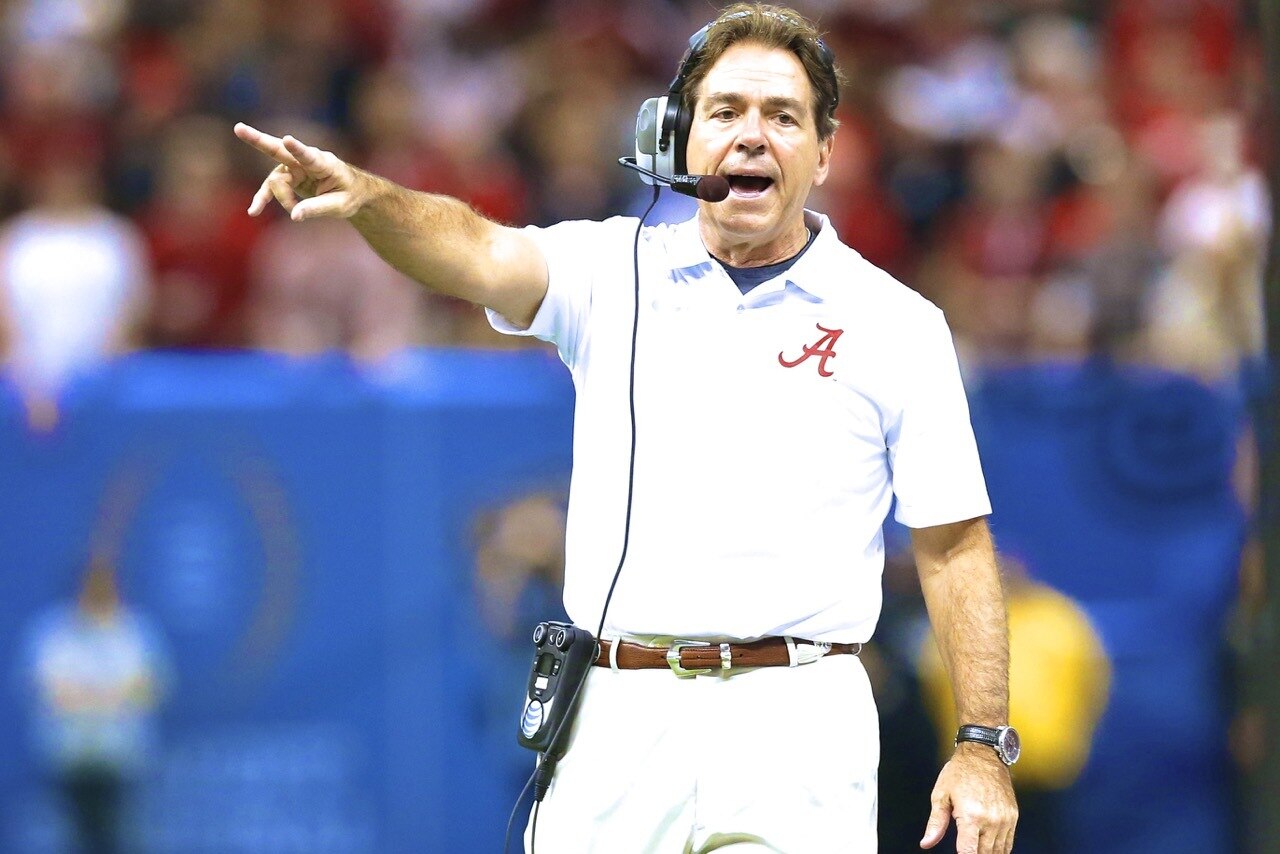How Much Money Does Alabama Football Bring In

USA Today
At nearly $7 million annually, Alabama head coach Nick Saban carries the highest price tag for anyone in college football. Consider such check-writing an investment for Alabama—and boy oh boy, are the Crimson Tide getting a return on that investment.
Alabama athletics generated a surplus of more than $33 million for the 2013-14 fiscal year, Michael Casagrande of AL.com reported Monday. That number is nearly $6 million more than the $27 million surplus from the 2012-13 fiscal year:
The most recent Alabama gains came with a 6.6 percent revenue growth in 2013-14 as football continues to drive the ship. Nick Saban's program had a $53.3 million surplus with revenues of $95.3 million.
The expenses rose by less than a million from 2012-13 but the revenue jumped by nearly $7 million. The biggest football gains came from royalties ($4.5 million from $1.3 million), broadcast, television, radio and Internet rights ($9.1 million from $7.2 million) and contributions ($20.7 million from $18.9 million).
In the conversation about college football's place in the academic arena, Alabama is an example of why it can be both a big business and important to a university's profile.
How Alabama's on-field success has impacted the program is evident. With the exception of Saban's first year in 2007, Alabama has enjoyed at least 10 wins every season since 2008. Under Saban, the Tide have won four SEC West titles, three SEC Championships and three national championships. The program regularly puts players into the NFL.

Brynn Anderson/Associated Press
More success under Saban has equaled more money. Certainly, football is a driving force there. That's important, because Casagrande's report also shows that the Tide had more than $120 million in expenses for 2013-14. That's a little less than $4 million more than the expenses shown for the previous fiscal year. According toUSA Today's 2012-13 database, Alabama is one of the biggest spenders in college athletics.
It's the classic case of spend money, make money. However, consider what Alabama is doing because it operates comfortably in the black. That's where Saban's success has impacted Alabama as a university.
Go back two years to 2013, when Saban was profiled on the CBS show 60 Minutes. Alabama Chancellor Dr. Robert Witt told the program,"Nick Saban is best financial investment this university has ever made. We have made an investment that's been returned many fold" (h/t Chip Patterson of CBSSports.com).
In what ways, though? Chris Smith of Forbes.com expanded on that in 2013:
That on-field success generates financial prosperity, as detailed below, and also makes Alabama a top choice for students and athletes alike. In 2007, Alabama had an acceptance rate of 77%. Today, rivals like Auburn and LSU are still at that near-80% rate; Alabama now accepts just 53% of applicants.
For the 2012-13 football season, the most recent for which financial data is available, Alabama reported football revenue of $89 million, second only to Texas. The $50 million or so in football profit not only supported non-revenue sports like golf and gymnastics, but it also helped Alabama's athletic department end the year $34 million in the black.While many athletic departments have to take loans from their parent universities just to break even, Alabama's athletic department sends money the other way. Last year it contributed around $6.5 million to the university to provide for faculty support and non-athletic scholarships.
Now look at the most recent numbers from Casagrande's report. Alabama's athletic department transferred over $9 million of its 2013-14 surplus back to the university. As sports business guru Kristi Dosh wrote in 2011 on her site, The Business of College Sports, only a small percentage of athletic departments are self-sustaining(and/or lightly subsidized), and even fewergive back to their respective universities.
In short, Alabama is part of it.
Alabama is the poster child for why major college football gets its unofficial "don't call it a minor league" title relative to the NFL.In fact, Alabama's Sugar Bowl appearance against Ohio State in the first College Football Playoff had viewership thatrivaled the NFL's Wild Card Weekend, per Jason McIntyre of The Big Lead. Considering that the NFL is far and away America's most popular sport, that's an eye-opening debut.
Alabama is additionally part of the reason why college football players could be receiving a payout for name/image/likeness rights due to a judge's ruling in the Ed O'Bannon trial. There's a lot of fuzzy math in college athletics to give off the appearance of financial belt-tightening—see Alabama-Birmingham, which of all places killed off its football program last year—but the numbers from Tuscaloosa are as clear as day.
Alabama is filthy rich, and Saban plays a huge role in that. In the university's eyes, his enormous salary is worth it.
Ben Kercheval is a lead writer for college football. All quotes cited unless obtained firsthand.
How Much Money Does Alabama Football Bring In
Source: https://bleacherreport.com/articles/2367311-alabamas-insane-33-million-profit-from-football-proves-nick-sabans-value#:~:text=Alabama's%20Insane%20%2433%20Million%20Profit%20from%20Football%20Proves%20Nick%20Saban's%20Value,-Ben%20Kercheval%40%40&text=At%20nearly%20%247%20million%20annually,for%20anyone%20in%20college%20football.
Posted by: ethertoncalawn.blogspot.com

0 Response to "How Much Money Does Alabama Football Bring In"
Post a Comment